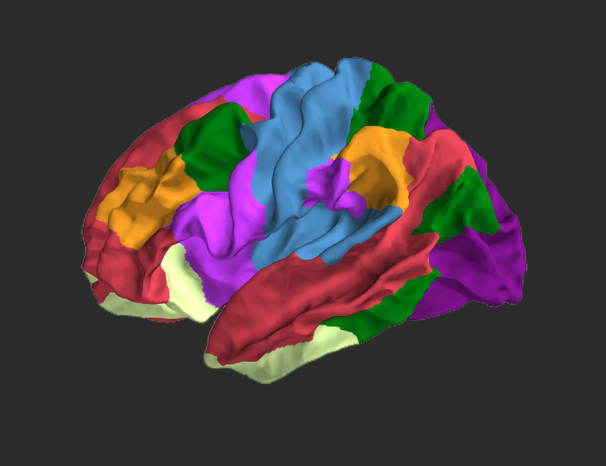Xiaosong He:
ORCID: https://orcid.org/0000-0002-7941-2918
Role: ConceptualizationRole: Data curationRole: Formal analysisRole: InvestigationRole:
SoftwareRole: ValidationRole: VisualizationRole: Writing - original draftRole: Writing
- review & editing
Lorenzo Caciagli:
ORCID: https://orcid.org/0000-0001-7189-9699
Role: ConceptualizationRole: Formal analysisRole: ResourcesRole: Writing - original
draftRole: Writing - review & editing
Linden Parkes:
ORCID: https://orcid.org/0000-0002-9329-7207
Role: ConceptualizationRole: Formal analysisRole: MethodologyRole: Supervision
Jennifer Stiso: Role: ConceptualizationRole: MethodologyRole: Writing - review & editing
Teresa M. Karrer: Role: SoftwareRole: Writing - review & editing
Jason Z. Kim:
ORCID: https://orcid.org/0000-0002-3970-4561
Role: MethodologyRole: Software
Zhixin Lu: Role: Conceptualization
Tommaso Menara:
ORCID: https://orcid.org/0000-0002-5523-2170
Role: Data curationRole: Formal analysisRole: MethodologyRole: SoftwareRole: Writing
- review & editing
Fabio Pasqualetti: Role: ConceptualizationRole: SoftwareRole: Supervision
Michael R. Sperling:
ORCID: https://orcid.org/0000-0003-0708-6006
Role: ConceptualizationRole: ResourcesRole: SupervisionRole: Writing - review & editing
Joseph I. Tracy: Role: ConceptualizationRole: MethodologyRole: ResourcesRole: SupervisionRole: Writing
- review & editing
Dani S. Bassett:
ORCID: https://orcid.org/0000-0002-6183-4493
Role: ConceptualizationRole: Funding acquisitionRole: MethodologyRole: Project administrationRole:
ResourcesRole: SupervisionRole: Writing - original draft
Journal ID (nlm-ta): Sci Adv
Journal ID (iso-abbrev): Sci Adv
Journal ID (publisher-id): sciadv
Journal ID (hwp): advances
Title:
Science Advances
Publisher:
American Association for the Advancement of Science
ISSN
(Electronic):
2375-2548
Publication date Collection:
November
2022
Publication date
(Electronic, pub):
09
November
2022
Volume: 8
Issue: 45
Electronic Location Identifier: eabn2293
Affiliations
[
1
]Department of Psychology, School of Humanities and Social Sciences, University of
Science and Technology of China, Hefei, Anhui, China.
[
2
]Department of Bioengineering, University of Pennsylvania, Philadelphia, PA, USA.
[
3
]UCL Queen Square Institute of Neurology, Queen Square, London, UK.
[
4
]MRI Unit, Epilepsy Society, Chesham Lane, Chalfont St Peter, Buckinghamshire, UK.
[
5
]Personalized Health Care, Product Development, F. Hoffmann-La Roche Ltd., Basel, Switzerland.
[
6
]Department of Mechanical and Aerospace Engineering, University of California, San
Diego, San Diego, CA, USA.
[
7
]Department of Mechanical Engineering, University of California, Riverside, Riverside,
CA, USA.
[
8
]Department of Neurology, Thomas Jefferson University, Philadelphia, PA, USA.
[
9
]Departments of Electrical and Systems Engineering, Physics and Astronomy, Psychiatry,
and Neurology, University of Pennsylvania, Philadelphia, PA, USA.
[
10
]Santa Fe Institute, Santa Fe, NM, USA.
Author notes
Author information
Article
Publisher ID:
abn2293
DOI: 10.1126/sciadv.abn2293
PMC ID: 9645718
PubMed ID: 36351015
SO-VID: 83ac67a7-37b8-4e72-bf12-4841a9e007cc
Copyright © Copyright © 2022 The Authors, some rights reserved; exclusive licensee American Association
for the Advancement of Science. No claim to original U.S. Government Works. Distributed
under a Creative Commons Attribution NonCommercial License 4.0 (CC BY-NC).
License:
This is an open-access article distributed under the terms of the
Creative Commons Attribution-NonCommercial license, which permits use, distribution, and reproduction in any medium, so long as the
resultant use is
not for commercial advantage and provided the original work is properly cited.
Funded by:
FundRef http://dx.doi.org/10.13039/100000001, National Science Foundation;
Award ID: BCS-1631550
Funded by:
FundRef http://dx.doi.org/10.13039/100000001, National Science Foundation;
Award ID: IIS-1926757
Funded by:
FundRef http://dx.doi.org/10.13039/100000025, National Institute of Mental Health;
Award ID: 2-R01-DC-009209-11
Funded by:
FundRef http://dx.doi.org/10.13039/100000025, National Institute of Mental Health;
Award ID: R01-MH112847
Funded by:
FundRef http://dx.doi.org/10.13039/100000025, National Institute of Mental Health;
Award ID: R01-MH107235
Funded by:
FundRef http://dx.doi.org/10.13039/100000025, National Institute of Mental Health;
Award ID: R21-M MH-106799
Funded by:
FundRef http://dx.doi.org/10.13039/100000025, National Institute of Mental Health;
Award ID: K99MH127296
Funded by:
FundRef http://dx.doi.org/10.13039/100000025, National Institute of Mental Health;
Award ID: R01-MH104606
Funded by:
Research Start-up Fund of USTC;
Funded by:
National Science Foundation Graduate Research Fellowship;
Award ID: DGE-1321851
Funded by:
NARSAD Young Investigator Grant from the Brain & Behavior Research Foundation;
Funded by:
Berkeley Fellowship, jointly awarded by University College London and Gonville and
Caius College, Cambridge;
Funded by:
FundRef http://dx.doi.org/10.13039/100000065, National Institute of Neurological Disorders and Stroke;
Award ID: R01-NS112816-01
Funded by:
NIH and DARPA grants;
Funded by:
FundRef http://dx.doi.org/10.13039/100000183, Army Research Office;
Award ID: W911NF-14-1-0679
Funded by:
FundRef http://dx.doi.org/10.13039/100000183, Army Research Office;
Award ID: W911NF-16-1-0474
Funded by:
Paul Allen Foundation;
Funded by:
Swartz Foundation;
Funded by:
FundRef http://dx.doi.org/10.13039/100000065, National Institute of Neurological Disorders and Stroke;
Award ID: R01-NS099348

